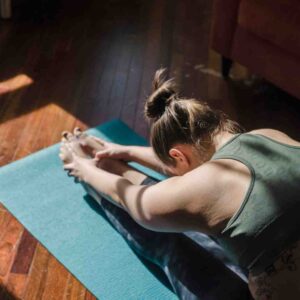Table of Contents
Introduction
Pilates advantages over Yoga
Yoga vs. Pilates
Pilates or Yoga?
Q&A
Conclusion
"Yoga emphasises flexibility and relaxation, while Pilates builds core strength and stability."
Introduction
Pilates and yoga are popular exercises for flexibility, strength, and balance. The two practises are comparable but distinct. Yoga emphasises flexibility and relaxation, while Pilates emphasises core strength and posture. Yoga positions can be done standing up, but Pilates movements are usually done on a mat or with specialised equipment. Pilates and yoga both enhance physical and mental health, yet they have different benefits and methods.
Pilates advantages over Yoga
Pilates and yoga have grown in popularity recently. Both practises are similar yet have different benefits and approaches. Yoga incorporates physical postures, breathing exercises, and meditation to improve well-being, whereas Pilates is a low-impact core-strengthening exercise. This article compares Pilates to yoga.
Pilates improves core strength. Good posture, balance, and stability depend on the abdominals, back, and pelvic floor. Pilates strengthens, stretches, and coordinates these muscles. Pilates strengthens the core, relieving back discomfort and improving spinal health.
Low-impact Pilates is another benefit. Pilates is low-impact and customizable, unlike yoga, which might include jumping and balancing on one leg. Pilates is good for persons with injuries or chronic diseases like arthritis.
Pilates has many workouts for different fitness levels and purposes. Pilates can help you stretch, strengthen, or relax. Resistance bands, balls, and machines can provide diversity and difficulty to Pilates workouts.
Pilates improves mental and physical wellbeing. Pilates requires concentration, which calms the mind and reduces tension. Pilates improves awareness and inner calm by focusing on breath and movement.
Pilates may be done anywhere, anytime. Pilates can be done at home, the gym, or the office, unlike yoga, which requires a specialised area and equipment. Pilates is convenient for busy folks.
Overall, Pilates provides more benefits than yoga. Pilates improves mental wellness, builds core strength, and is low-impact. Pilates can assist beginners and experienced exercisers reach their fitness objectives and enhance their health.
Yoga vs. Pilates
Pilates and yoga have grown in popularity recently. Both practises share similarities, however their approach, philosophy, and tactics differ. This essay will contrast Pilates and yoga.
Pilates strengthens core muscles. Joseph Pilates created it in the early 20th century to help injured troops recover. Pilates strengthens, balances, and improves posture. The mat or reformer, Cadillac, or Wunda chair are used for regulated motions.
However, yoga is a 5,000-year-old Indian practise. This holistic practise unites mind, body, and soul. Yoga combines meditation, breathing, and physical postures. The practise relaxes, reduces tension, and improves health.
Focus distinguishes Pilates from yoga. Yoga emphasises flexibility and relaxation, whereas Pilates strengthens the core. Yoga stretches and lengthens muscles, while Pilates targets particular muscle groups.
Pilates and yoga breathe differently. Breathing helps Pilates move and activate the core. Breathing stabilises and aligns the body. Yoga breathing relaxes the mind. Breathing reduces stress and anxiety.
Pilates and yoga equipment differs. Pilates can be done on a reformer, Cadillac, or Wunda chair or on a mat. These machines help strengthen and stretch. Yoga requires simply a mat. Some practitioners support their practise with blocks, belts, or blankets.
Pilates and yoga have different tempos. Pilates is done slowly and precisely. Smooth, flowing motions emphasise good alignment and form. Yoga styles differ in tempo. Yin and restorative yoga are slower and more meditative than vinyasa or power yoga.
Finally, Pilates and yoga have different philosophies. Pilates emphasises physical fitness and flexibility. It helps people get fit. Yoga unites mind, body, and soul. It promotes physical, mental, and emotional health.
Pilates and yoga are distinct practises. Yoga unites mind, body, and soul, while Pilates strengthens core muscles and improves fitness. Both practises can help any workout routine. Choose a practise that fits your needs and ambitions.
Pilates or Yoga?
Pilates and yoga have grown in popularity recently. Both practises promote flexibility, strength, and well-being. Despite their similarities, the two practises differ in important ways.
Origin distinguishes Pilates from yoga. Yoga is a centuries-old Indian practise. Through meditation, breathing, and physical postures, it unites the mind, body, and spirit. Joseph Pilates created Pilates in the early 20th century. It was created as a World War I military rehabilitation programme.
Focus distinguishes Pilates from yoga. Both develop flexibility, strength, and balance, but in distinct ways. Pilates strengthens core muscles and improves posture through regulated movements, while yoga stretches and lengthens muscles.
Pilates uses the reformer, Cadillac, and Wunda chair. These machines sustain and resist activity with springs and pulleys. Yoga only needs a yoga mat and can be done anywhere.
Pilates and yoga breathe differently too. Pilates engages core muscles and stabilises with breath. Breathing calms the mind and deepens yoga poses.
Pilates is more intensive than yoga. Pilates requires concentration and focus. Yoga is slower and more soothing.
Finally, Pilates and yoga have different purposes. Pilates can improve athletic performance and repair injuries. Dancers and athletes who wish to build core strength and flexibility love it. Yoga, on the other hand, reduces stress, improves mental clarity, and boosts well-being.
Which practise suits you? Your goals and choices determine the response. Pilates is a hard core-strengthening activity. Yoga is a more relaxing practise that improves mental clarity and well-being. Both practises are beneficial and can enhance any workout programme.

Q&A
1. What distinguishes Pilates from yoga?
Yoga emphasises relaxation, whereas Pilates strengthens core muscles and posture.
2. Is Pilates yoga?
Joseph Pilates invented Pilates in the early 20th century.
3. Yoga or Pilates for weight loss?
Pilates may build muscle and increase metabolism better than yoga, but yoga can relieve stress and promote well-being.
Conclusion
Yoga and Pilates improve balance, flexibility, and strength. Pilates emphasises core strength and posture, while yoga emphasises flexibility, relaxation, and spirituality. Pilates uses the reformer, while yoga uses blocks and straps. Both practises have unique benefits and can compliment each other in a well-rounded workout routine.


